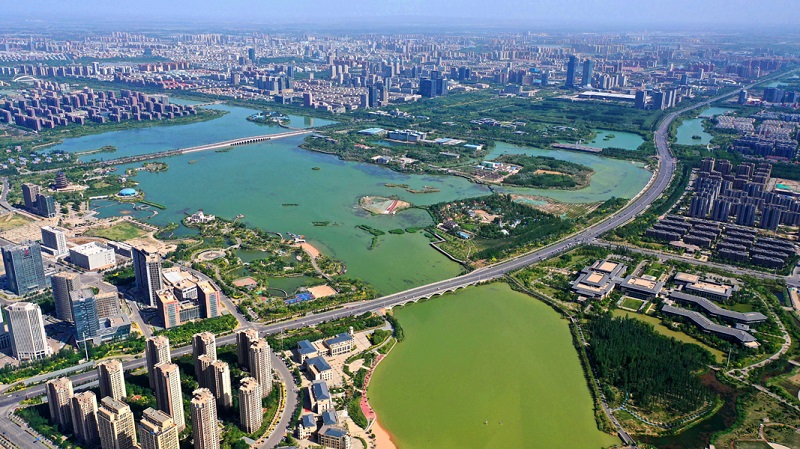Ningxia aims to develop through high technological content and projects

Nourished by the Yellow River, Yinchuan, the capital of Northwest China's Ningxia Hui autonomous region, is latticed by waterways and rich in greenery. [Photo by Li Jing/for chinadaily.com.cn]
Northwest China's Ningxia Hui autonomous region aims to continue attracting projects with high technological content and low energy consumption, to support high-quality development and promote innovation while fostering new development impetus in the region, the region's top official said.
While Ningxia was less developed compared with the coastal regions in the past, the region has made significant strides in high-quality development, nurturing new quality productive forces over the past few years, said Liang Yanshun, secretary of the Party committee of Ningxia Hui autonomous region.
The regional GDP grew by 6.6 percent last year, maintaining its position at the top of the national rankings for seven consecutive quarters. Meanwhile energy consumption intensity also decreased by 9.6 percent, he said during a news conference held in Beijing on Thursday.
According to Zhang Yupu, chairman of Ningxia, who is also a deputy to the 14th National People's Congress, the growth of high-end manufacturing in Ningxia accelerated last year, with the added value of high-tech manufacturing industry increasing by 44.5 percent.
The tax revenue from high-end equipment manufacturing surged by 57 percent meanwhile, he said.
As the only national-level hub for computing power networks, Ningxia ranks first in the country for the environmental index of computing power resources. This year, Ningxia will fully promote the construction as the country's "computing power capital", aiming to achieve a digital economy added value accounting for over 36 percent, he said.
In addition, the region has also been accelerating construction of a green energy system. The new materials industry has been surging in the region during the past few years. It has also become the region with the largest reserves of silica, with annual crystalline silicon production capacity exceeding 200GW, said Zhang.
According to Zhang, the region saw its investment into research and development up by 12.7 percent last year and it is committed to continue implementing industrial innovation projects, facilitating the conversion of a greater number of research achievements into new products and industries.
- Top legislature schedules session for December
- China's top legislator holds talks with president of Luxembourg parliament
- China's top legislator meets with French president
- China, Maldives pledge to enhance exchanges between legislative bodies
- Senior Chinese legislator meets Portugal's PSD delegation



